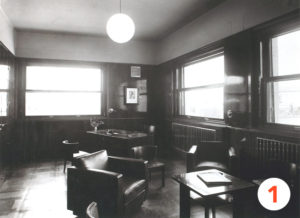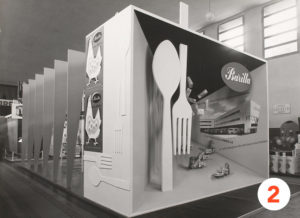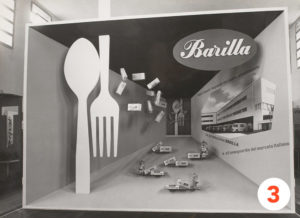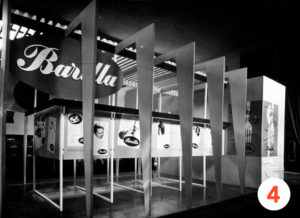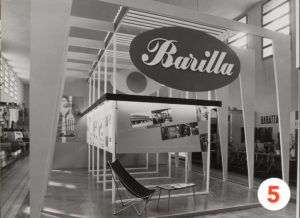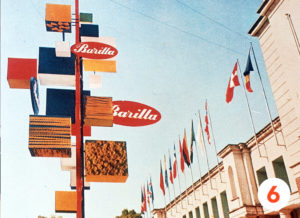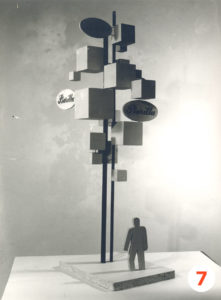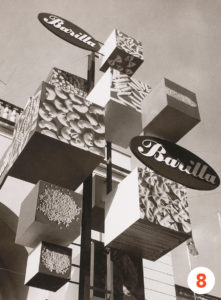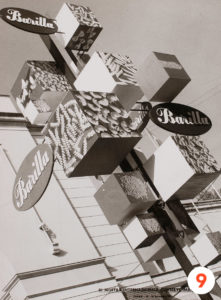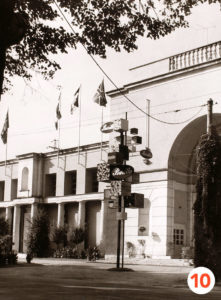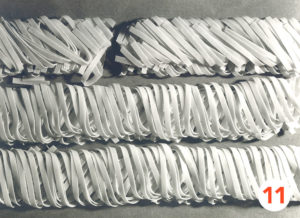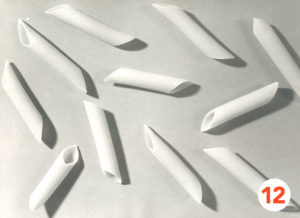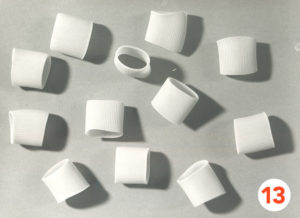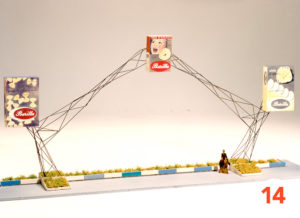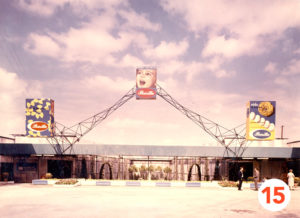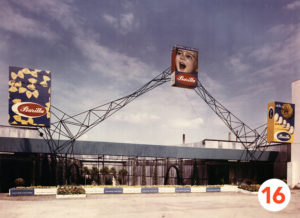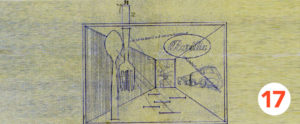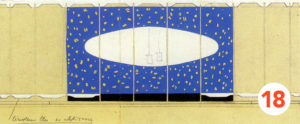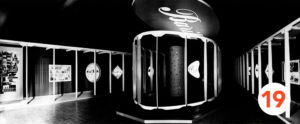The Barilla stands models (1955-1959)
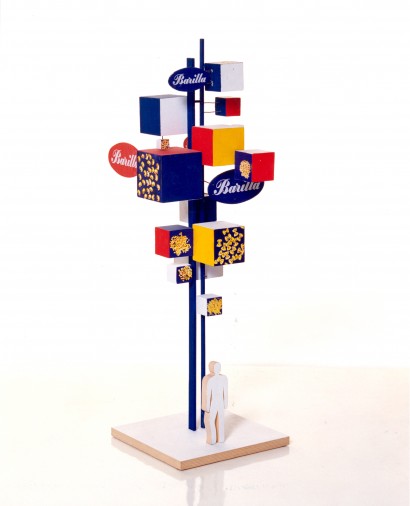
by Giancarlo Gonizzi
It was 1999 and the impending demolition site of the Viale Barilla plant, included in the urban redevelopment plan drawn by Renzo Piano (1937-), lead me to verify the possibility to dismount and recuperate Pietro Barilla’a (1913-1993) studio (photo 1), located on the first floor of the office building.
The furnishings designed by architect Karl Elsasser from Stuttgart in 1933 had been built by an esteemed cabinetmaker of Parma, Medardo Monica (1905-1985).
Together with his son Ruggero Monica (1930-2019), who followed in his father’s footsteps and had superised the making of a number of company furnishings, I was verifying the mounting technique and the procedure for dismounting and save this excellent example of Déco furniture.
It was built in modular sections and dismounting one of these, we happened to find the cartouche of drawings left by Medardo as the “signature” for his work. Ruggero was struck by this. At the end of our site inspection, we went back to the Historical Archives to define a plan of action. Turning between his hands the cartouche his father left, Ruggero remembered how he also made the Barilla stands in use in the 1950s.
– Is it true? Did he make those?
– He made several of them. He started in 1953 with a “small theater” (photos 2-3-4-5) with a fork and spoon. Then I quickly retrieved the photos and started to show them to Ruggero who, thanks to the images, began to recall and tell anecdotes and particulars of the construction.
Among the photos, there also was one of a model (photos 10) of the 1955-1956 stand: a totem (photos 6-7-8-9) with cubes covered by pasta photographs (photos 11-12-13), set up on the northern avenue of the Parco Ducale, in front of the pavilion of the Conserve Exhibit.
– We should still have it in our attic…
– What do you have in your attic? A photo?
– No, no, we have the model. Besides, we should still have the silhouettes!
– But are you sure about this?
– Fairly sure.
– Could we go and see? The laboratory is not far…
So, we got in a car and reached Via Scarabelli Zunti and went up to the attic – the mezzanine of the shed – where Ruggero began to snoop around stacks of furnishings and forgotten objects.
– There it was!
A two meter long model (photo 14) shaped like an arch made of reticular metal with Barilla pasta boxes – almost a monumental portal – was lying in a corner. It was the stand (photos 15-16) designed by architect Guglielmo Lusignoli (1920-2003) in 1959, still showing its original colors, a bit faded with time, and with grass of the field made of paper.
– But it is not the one of the photo that we saw earlier…
– That one should be here too…
Looking around, that one came out too, missing a few detached pieces.
Then, we found a large bag with a lot of cut out shapes made of set designing paper, photographs and technical drawings traced by Erberto Carboni! (photos 17-18) It looked like we found Ali Baba’s cave, and incredible things kept jumping out: spheres, pyramids, and geometrical solids made of wood, lamp and furniture prototypes, shapes to make frames, gouges and antique tools. In another bag, together with the photos of a stand (photo 19) – oval shaped like the logo – which we had never seen before, there were the related projects, photos and sketches, and modifications made during construction.
– Ruggero, could we photograph these things for the Archives?
– But I was thinking to bring it all to you! They are yours! Perhaps before we shall clean them a bit…
Thus, about ten days later, the models and the technical documentation made their triumphal entrance at the Historical Archives, all dusted off. They were useful to rewrite the chapter on the history of Barilla stands that we later published in 2004. Later on, they were exhibited at the Triennial show on Expo 2015 and in various exhibits dedicated to design.
But when I pass by the case that today contains the small model of the totem, I immediately think back to Ruggero’s attic, the “wizard’s shop” that had stored those amazing objects for us.
